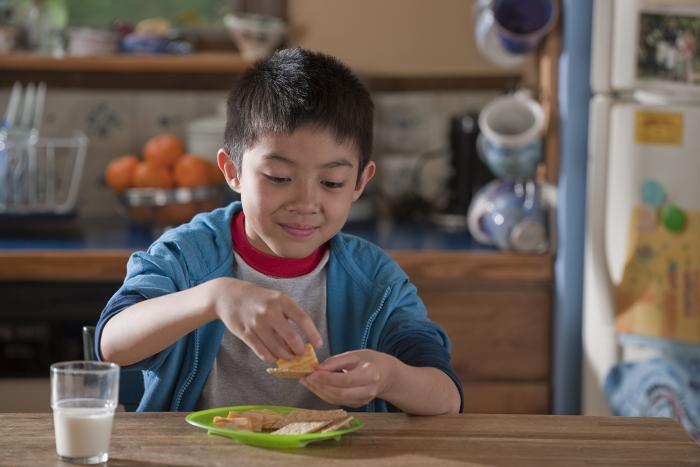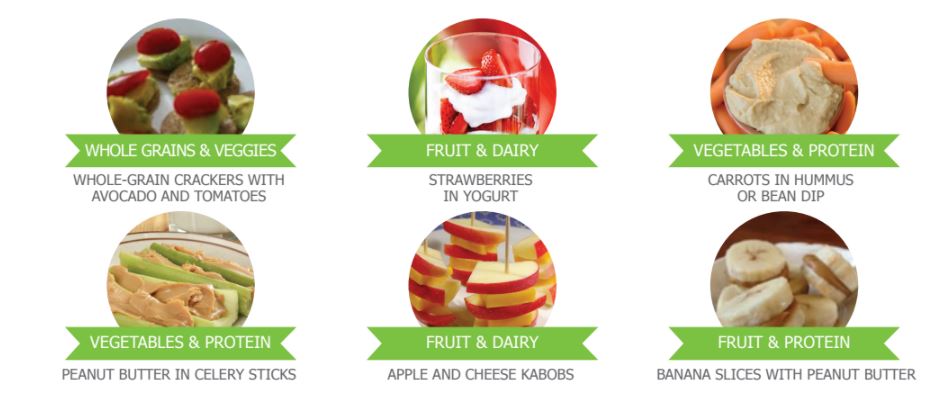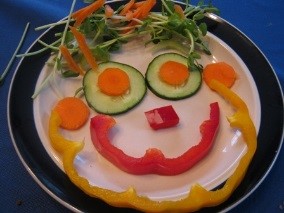
Smart Snacking: The why, what, and when of healthy snacks
Lacey Anderson – Health Educator
Lauren McCallum – Senior Health Educator
Does this sound familiar? The kids get home from school. You’ve just walked through the door from a busy day. No one has eaten since lunch (which was before Noon), and it’s going to take at least an hour to get dinner ready. Everyone is ravenous and wants to gorge on anything that’s easy and fast, which likely means some salty or sugary snack.
STOP. There’s a better way to snack.
September is Childhood Obesity Awareness Month, which is a great opportunity to highlight the importance of snacks in maintaining a healthy diet. Snacks done well can play an important role in managing kids’ hunger and boosting nutrition. A well-timed snack can level spikes in hunger and provide a much-needed energy boost between meals.
According to the Centers for Disease Control and Prevention, about one in six (17%) children in the United States has obesity.
- Children with obesity are at higher risk for having other chronic health conditions and diseases, such as asthma, sleep apnea, bone and joint problems, and type 2 diabetes. They also have more risk factors for heart disease, such as high blood pressure and high cholesterol.
- Children with obesity are often bullied and teased more than their peers. They are also more likely to suffer from social isolation, depression, and lower self-esteem.
- Children with obesity are more likely to have obesity as adults. This can lead to lifelong physical and mental health problems. Adult obesity is associated with a higher risk of type 2 diabetes, heart disease, and many types of cancers.
Many factors can have an impact on childhood obesity, including eating and physical activity behaviors, genetics, metabolism, family and home environment, and community and social factors. While there is no one solution, there are many things parents and caregivers can do to help their children achieve and maintain a healthy weight.
Encouraging healthy snacking can help.
- Choose nutritious snacks. Most snacks should consist of nutrient-dense foods, such as fruits, vegetables, whole grains, low-fat dairy, and nuts or seeds, which will help kids meet their nutrient needs for the day.
- Timing snacks is important too. Unplanned, random snacking interferes with kids’ appetites and can disrupt eating full meals. The Academy of Nutrition and Dietetics says “most children and teens need to eat every three to four hours throughout the day to meet their MyPlate daily food plan. Younger kids need to eat three meals and at least two snacks a day. Older kids need to eat three meals and at least one snack a day (they may need two snacks if they’re going through a growth spurt or if they are very physically active).”
- Keep it between 100-300 calories. According to the Mayo Clinic, “snacks usually account for 100 to 300 calories for the day (depending on your specific caloric needs). Be sure to keep portion sizes appropriate and not overindulge with mindless munching.”
- Include two food groups. When preparing a healthy snack, it is important to include at least at least two food groups. Here are a few ideas.

Here are some healthy snacks using two food groups. What are you favorite food group combinations? - Swap the sugar. – Limit highly processed snacks, which are high in sugar, salt, fat, and provide little lasting energy. Here are some easy substitutions for frequently consumed less healthy choices.
- Instead of soda, add fruit to fizzy seltzer water.
- Instead of chips, try crunchy edamame with sea-salt.
- Instead of cookies, try whole-grain crackers topped with peanut butter and raisins.
- Instead of tangy candy, try fruit salad.
- Instead of an ice cream sundae, try a low-fat yogurt and granola parfait.
- Instead of French fries, try baked sweet potato wedges.
- Instead of a milkshake, try a strawberry banana smoothie made with low fat yogurt.
- Instead of a nutty candy bar, try homemade trail mix.
So next time the family rushes to find something quick and easy to eat between meals, have them grab an apple from the fruit bowl, eat a few pre-cut carrots from the fridge, or pair some whole-grain crackers with peanut butter from the pantry. Then wash it down with water. Their hunger will be satisfied, and you’ll feel better about their choices.
References:
- Academy of Nutrition and Dietetics. Helping Kids Maintain a Healthy Body Weight: A Cheat Sheet for Success.
- Academy of Nutrition and Dietetics. When Should My Kids Snack.
- Centers for Disease Control and Prevention. September is Childhood Obesity Month.
- Mayo Clinic. Easy Ways to Get Out of Your Snack Rut.
- Poe Center for Health Education. 2017-2018 Nutrition & Physical Activity Classroom Calendar: Fresh & Fun Snacking, September 2017.
For the Classroom: Vegetable Smiley Faces
Molly Ford – Meredith College Dietetic Intern

This fun vegetable snacktivity engages kids in making their own healthy snacks while teaching them about the food groups, vitamins found in vegetables, food safety, and different types of vegetables.
Download the activity here: Vegetable Smiley Faces
Featured Program: Growing Healthy Kids
Grade Level: 1st – 2nd
Program Length: 8-12 sessions, 60 minutes each
Growing Healthy Kids is a research-based curriculum from Oregon State University. Students learn about gardening, health, and plant biology while creating a paper, garden mural to be displayed at your school. Growing Healthy Kids lessons are fun and include music, physical activity, and a snack each lesson. This program is easily adjustable to fit into your schedule and can be offered for special education classes or as an after school program.
Program Goals Include:
– Increase the students’ exposure to vegetables and fruits.
– Increase the students’ consumption of vegetables and fruits and model healthy food and lifestyle choices.
The Poe Center offers nutrition and physical activity programs for Pre-K through 12th grades and adults. Schedule a program with us today.
